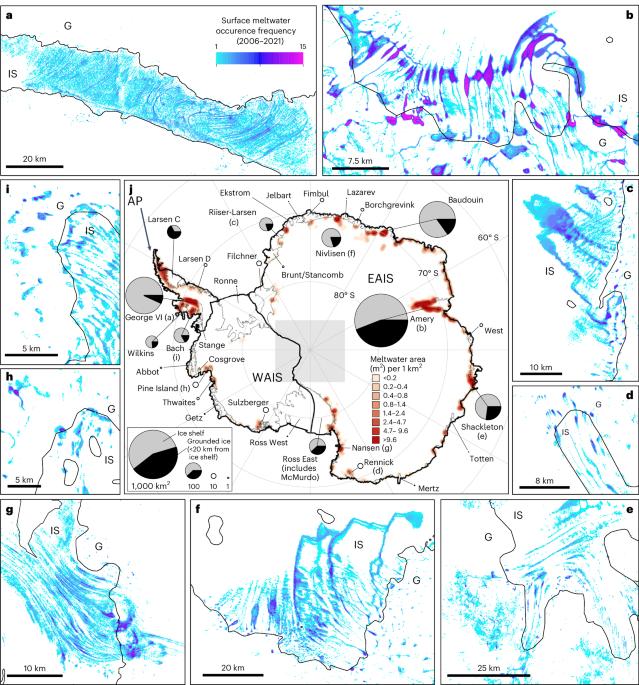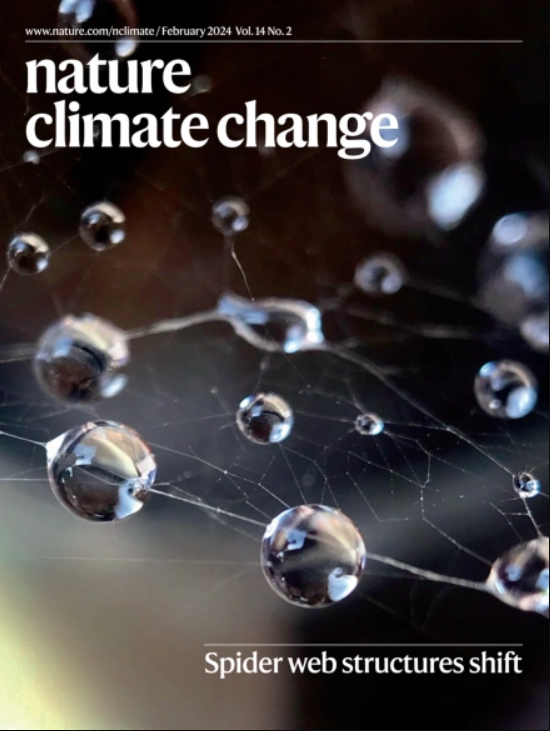Continent-wide mapping shows increasing sensitivity of East Antarctica to meltwater ponding
IF 27.1
1区 地球科学
Q1 ENVIRONMENTAL SCIENCES
引用次数: 0
Abstract
Surface meltwater is predicted to become increasingly important for Antarctic mass loss as atmospheric temperatures rise, due to its potential to influence ice dynamic, hydrofracture and radiative processes. However, our understanding of Antarctic surface meltwater is limited, with previous studies restricted in spatial or temporal scope. Here, using cloud computing, we produce an Antarctic-wide, monthly dataset of surface meltwater for 2006 to 2021. Surface meltwater covered 3,732 km2 across Antarctica on average during each melt season, with 30% on grounded ice. High interannual variability in meltwater area across the Antarctic Peninsula and in East Antarctica correlates with large-scale modes of climate variability. In west Antarctica, meltwater area is comparatively low and this correlation is absent. An increase in the magnitude and variability of surface meltwater area without a coincident increase in modelled snowmelt in East Antarctica indicates that the ice-sheet surface might be becoming more favourable to meltwater ponding. This study provides a continent-wide assessment of surface meltwater area in Antarctica between 2006 and 2021, highlighting recent increases in magnitude and variability in East Antarctica, with indications that the ice-sheet surface is becoming increasingly prone to further meltwater ponding.


整个大陆的测绘显示,东南极洲对融水淤积的敏感性日益增加
随着大气温度的升高,由于地表融水可能影响冰的动力、水力破裂和辐射过程,预计对南极的质量损失将变得越来越重要。然而,我们对南极表面融水的认识是有限的,以往的研究仅限于空间或时间范围。在这里,我们使用云计算,制作了2006年至2021年南极洲范围内的每月表面融水数据集。在每个融化季节,南极洲的表面融水平均覆盖3732平方公里,其中30%在地面冰上。整个南极半岛和东南极洲融水面积的高年际变率与气候变率的大尺度模态相关。在南极洲西部,融水面积相对较小,这种相关性不存在。表面融水面积的幅度和变异性增加,而东南极洲模拟融雪量却没有同时增加,这表明冰盖表面可能正变得更有利于融水淤积。
本文章由计算机程序翻译,如有差异,请以英文原文为准。
求助全文
约1分钟内获得全文
求助全文
来源期刊

Nature Climate Change
ENVIRONMENTAL SCIENCES-METEOROLOGY & ATMOSPHERIC SCIENCES
CiteScore
40.30
自引率
1.60%
发文量
267
审稿时长
4-8 weeks
期刊介绍:
Nature Climate Change is dedicated to addressing the scientific challenge of understanding Earth's changing climate and its societal implications. As a monthly journal, it publishes significant and cutting-edge research on the nature, causes, and impacts of global climate change, as well as its implications for the economy, policy, and the world at large.
The journal publishes original research spanning the natural and social sciences, synthesizing interdisciplinary research to provide a comprehensive understanding of climate change. It upholds the high standards set by all Nature-branded journals, ensuring top-tier original research through a fair and rigorous review process, broad readership access, high standards of copy editing and production, rapid publication, and independence from academic societies and other vested interests.
Nature Climate Change serves as a platform for discussion among experts, publishing opinion, analysis, and review articles. It also features Research Highlights to highlight important developments in the field and original reporting from renowned science journalists in the form of feature articles.
Topics covered in the journal include adaptation, atmospheric science, ecology, economics, energy, impacts and vulnerability, mitigation, oceanography, policy, sociology, and sustainability, among others.
 求助内容:
求助内容: 应助结果提醒方式:
应助结果提醒方式:


